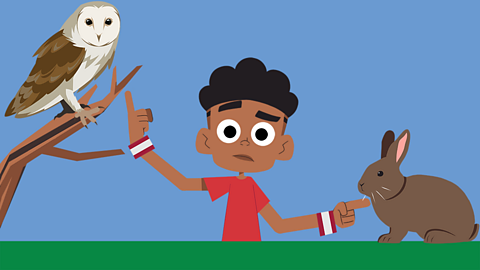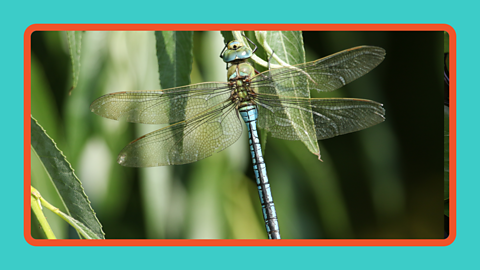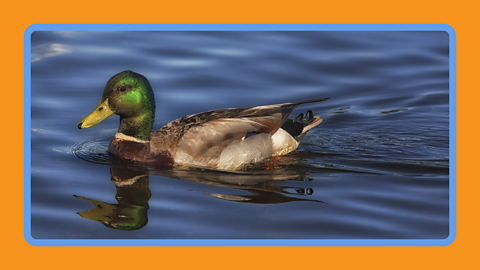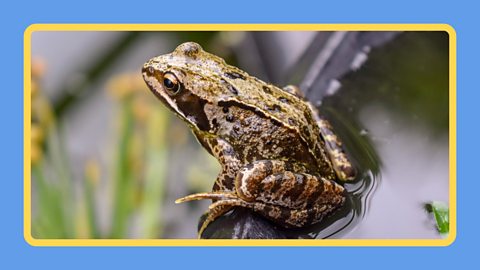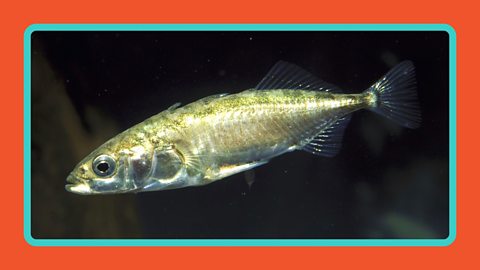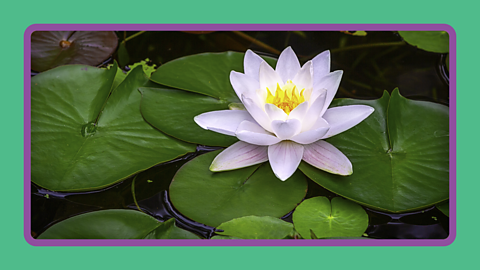Pond habitats
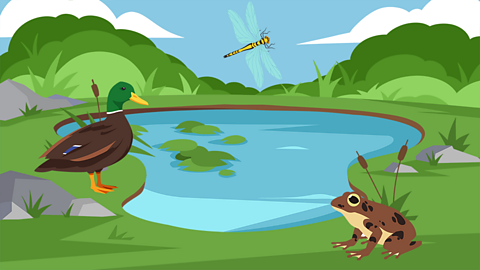
A pond habitat is a watery world where lots of different plants and animals live. It's a special place where creatures like fish, frogs, dragonflies and water lilies make their homes.
All animals need the same important things to survive; water, air, shelter and food. A pond habitat provides all of these for the species that live there.
Animals don't choose their habitat because they are suited to it. Their adaptations (the features that make them suited to their environment) happen randomly. If these adaptations help an animal to survive then they are passed on to its children. This is called evolution.

Watch: What are ponds?
Explore a pond habitat and the animals that live there.
Have you ever wondered what plants and animals live in the many pond habitats near you?
Well, pack your fishing net, we're off to do some pond dipping!
Just look at all the different plants and animals here.
This water lily needs to be close to the top of the pond.
It floats on the surface of the water as it uses the sun to make its food.
This also gives shelter to frogs and fish underneath.
There are also birds here. Look a duck!
Its webbed feet help it to paddle easily through the water.
Ducks have waterproof feathers to keep them dry when they're in the water. Incredible!
And there's a dragonfly. They live in the water until they are fully grown and eat insects.
They eat the insects they catch whilst still flying around. Amazing right?
Pond habitats contain so much life.
We're lucky to have so many of them here in the UK.
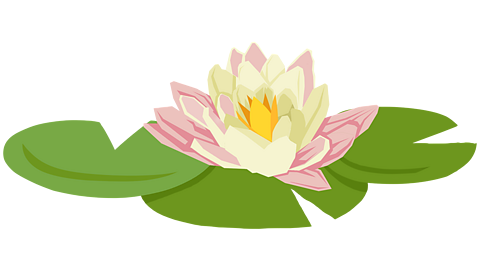
Fascinating facts
- Two thirds of all freshwater species in the UK live in pond habitats.
- Frogs are vertebrates that eat invertebrates like snails and slugs.
- Tadpoles know if the water in their pond is reducing and develop faster so that they turn into frogs and survive.
- In the UK we have three kinds of newt, the smooth newt, the palmate newt and the great crested newt.
- In the last century, around a third of the ponds in the UK have disappeared
- Plants like the water lily have adapted to keep their roots underwater rather than in soil.
- Dragonfly larvae develop under the water in pond habitats before going through a metamorphosis to change into their adult phase and flying away.
- Frogs hibernate through the winter in the UK at the bottom of pond habitats.

What is a pond habitat like?
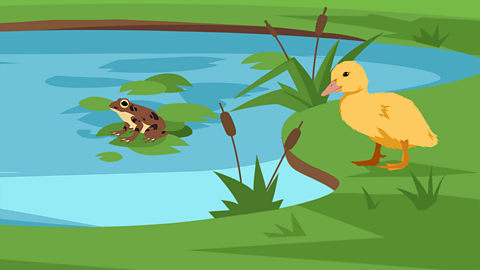
Ponds can be found in back gardens, parks, the countryside, farmland and in woodlands.
They can be either natural or man-made, like garden ponds.
They usually have a small area of water, which is full of plants, and sandy or muddy edges and bottoms.
Animals and insects, such as dragonflies and stickleback fish, can find lots of water, food and shelter.
The water in ponds is often full of a microscopic organism called algae.
Plant life found in ponds includes water lilies and reeds, which provide food and shelter to a variety of insects and animal life.

What is a pond habitat?
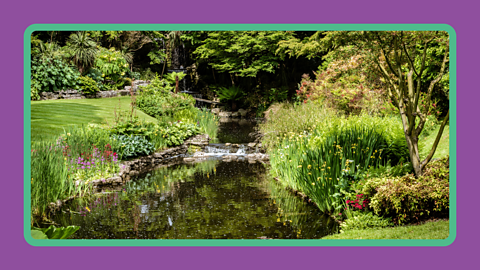
Image caption, Pond habitats
Pond habitats are home to lots of different animals and plants that all have special adaptations in order to survive there, and find food, air, water and shelter.
1 of 6
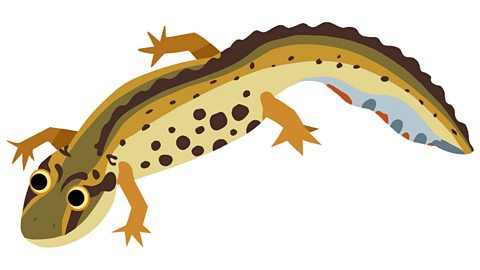
Did you know?
Smooth newts lay their eggs in ponds in the summer. The female newt will carefully wrap each egg in a leaf of pond weed.
They will spend most of the rest of the year in woodland, hedgerows, marshes and tussocky grassland where they will hunt for invertebrates to eat.
During winter, newts hibernate underground, among tree roots and in old walls.

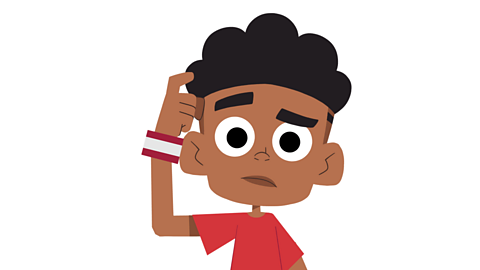
Important words
Adaptation – The way that animals change over time to suit different conditions.
Air – All animals need air to breathe.
Evolution – The way that animals develop small differences over time.
Food – The things that an animal or plant eats and takes nutrition from.
Pond habitat – Where an animal or plant lives, either in a natural or man-made pond.
Shelter – Where an animal finds protection from predators.
Water – All animals need to drink or take in water to survive.

Activities
Activity 1 – Pond habitats quiz
Activity 2 – Find the animals
Activity 3 – Pond habitat word search
Play Bitesize Primary Games
Play fun and educational primary games in science, maths, English, history, geography, art, computing and modern languages.

More on Living things and their habitats
Find out more by working through a topic
- count8 of 11
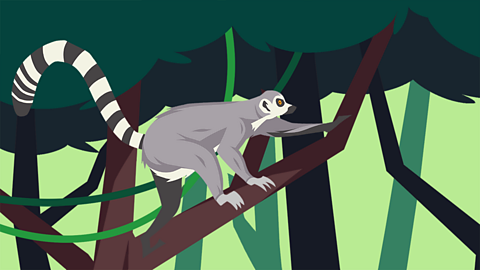
- count9 of 11

- count10 of 11
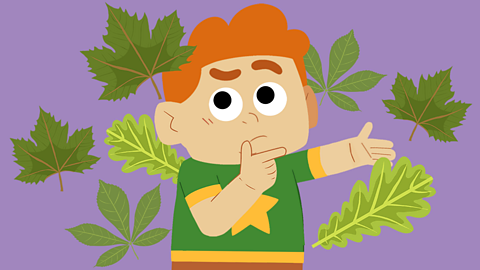
- count11 of 11
